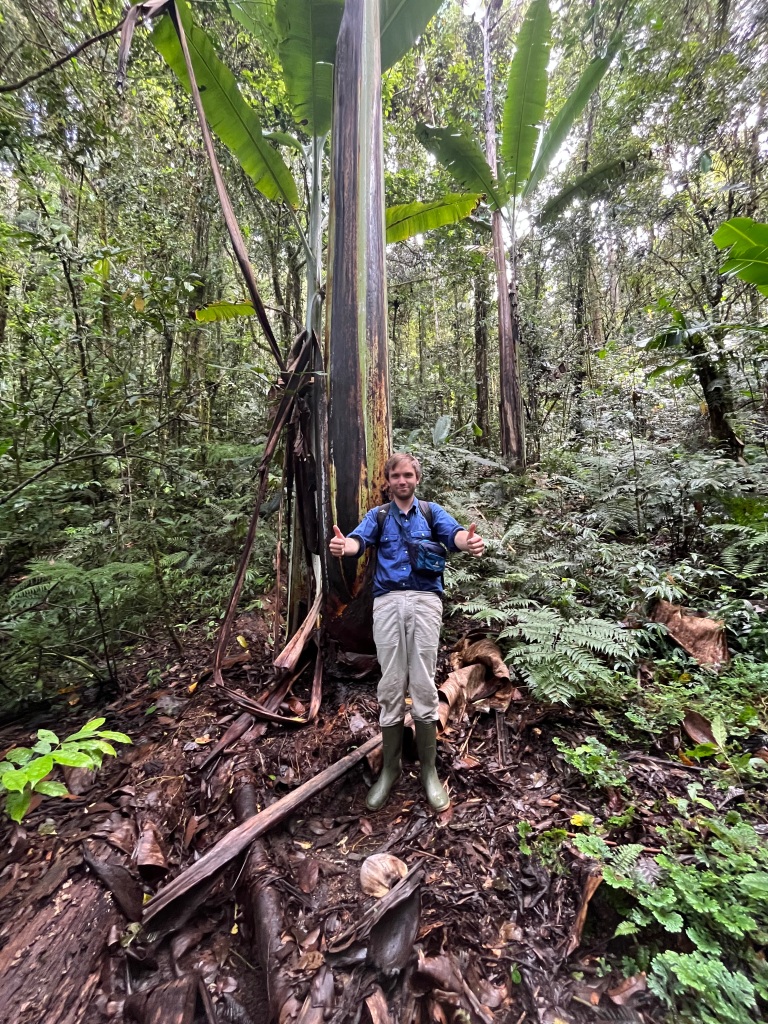2023 HARPER PRIZE SHORTLIST: Throughout March, we are featuring the articles shortlisted for the 2023 Harper Prize. The Harper Prize is an annual award for the best early career research paper published in Journal of Ecology. Liam Trethowan’s article ‘Plant species biogeographic origin shapes their current and future distribution on the world’s highest island mountain‘ is one of those shortlisted for the award:
👋 About me
My interests are the combination of being an ecology graduate who spent a ‘sandwich’ year working at Kew Gardens. That year was transformative both for my own confidence and a brand-new interest in plants (huge thanks to Ruth Clark and Gwil Lewis).
I then spent three years working on the tropical forests of Sulawesi supported by Francis Brearley and Tim Utteridge. During this time, I experienced long-term field research for the first time and met friends and collaborators, in Indonesia, who continue to be the keystones of my research including Deden Girmansyah, Endang Kintamani, Himmah Rustiami, Prof Charlie Heatubun and Jimmy Wanma – to name but a few.
Later, when COVID meant Flores fieldwork was replaced with sitting in a flat in Brentford, I was looking for new datasets to analyse which led to the project below:
🔎 About the shortlisted paper
Our paper aimed to show how the phylogeographic history of the Malesian flora could have the potential to predict it’s future. That is possible because Malesian species tend to have their evolutionary history in either Asia (what we call Sunda) or Australia (Sahul). These two continents have very different climate histories. If the species whose relatives were found in those continents remain adapted to those past conditions, they should respond differently to future climates. We did this on New Guinea’s Mount Jaya the tallest mountain on all the world’s islands.
What we found was that those species originating in the largely tropical past climate of Southeast Asia were more likely to tolerate future climates. This shows how the evolutionary history of species can be useful for forecasting the future of diversity. This is particularly relevant for tropical megadiversity, where the huge number of undersampled species means we need to draw on as much information as possible to give us the best chance to understand the future of these ecosystems.

What’s next?
I currently work on the Tropical Important Plant Area (TIPA) program in West Papua with Professor Charlie Heatubun, Haerul Arifin and Jimmy Wanma. TIPAs are an elegant and accessible expert informed prioritisation exercise. We are working with our colleagues in Indonesia to grow this network for their fascinating megadiverse flora.
I also teach how to establish permanent forest plots to add to the current Indonesian network. This is an exciting and expanding collaboration that will address a major gap in global forest monitoring projects.
Laura Jennings (the driving force behind West Papua TIPAs) and I alongside other colleagues at Kew and in Indonesia have built a new dataset of species Traits from Taxonomic Descriptions (TfTD). This initiative aims to build high percentage trait data coverage for the Malesian flora that could be easily replicated across the tropics. The data has already shown us large scale patterns in both fruits and flowers and is being used to improve our model forecasts like that carried out for the paper highlighted here.
I’m writing this in Bogor during one of our Growing Indonesian Genomics workshops where Himmah Rustiami, Sidonie Bellot, Oscar Perez-Escobar and Jeronimo Cid are teaching participants bioinformatics skills whilst also trying to produce two high coverage breadfruit genomes.
I also spend time failing to stop cats destroying my plot plants.
Find Liam on GoogleScholar.
Read the full list of articles shortlisted for the 2023 Harper Prize here.




